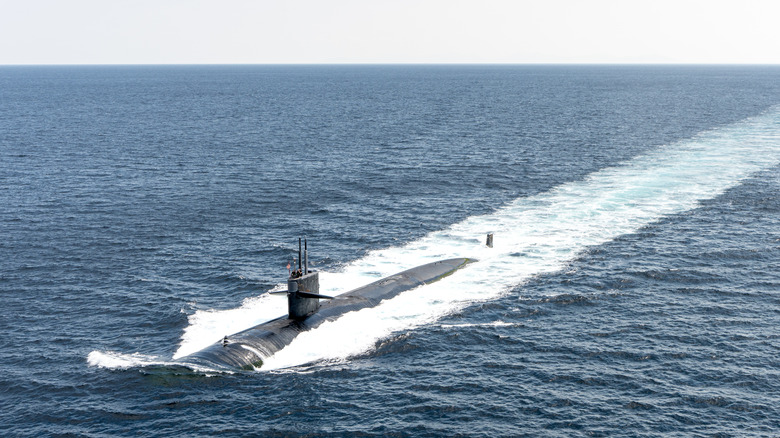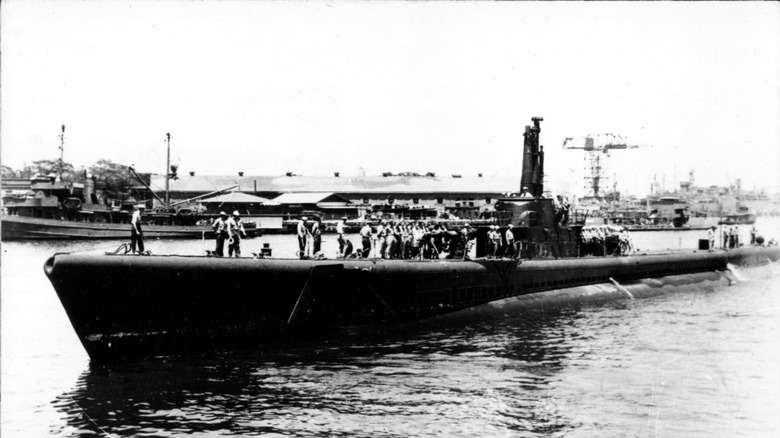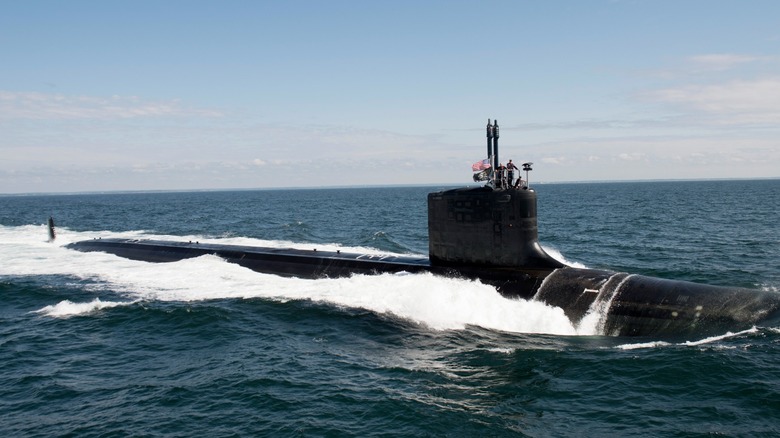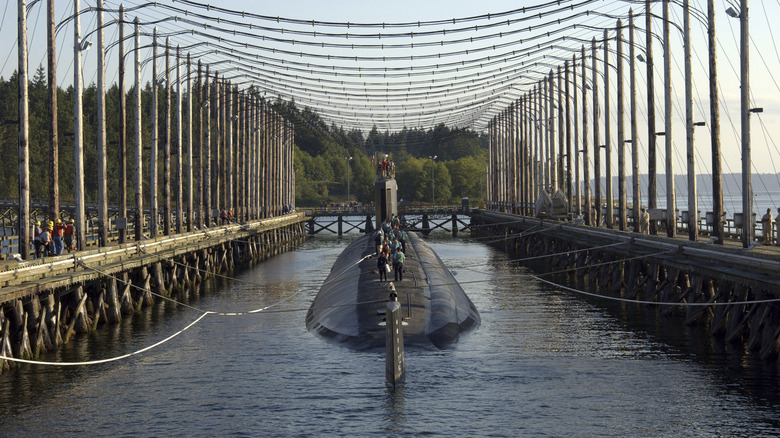3 Of The Deadliest Attack Submarines In The US Navy
There are three operational classes of attack submarines in its the U.S. Navy's large submarine fleet: the Los Angeles, the Seawolf, and the Virginia classes, with the Virginia being the newest. As deadly as these submarines are, bristling with torpedoes, mines and guided missiles, and powered by nuclear power plants, they actually haven't encountered combat in the same way older submarines did. In fact, only one nuclear-powered submarine has ever sunk another vessel, and it wasn't an American sub. It was the United Kingdom's HMS Conqueror, which sank an Argentinean cruiser during the Falkland Wars.
But it was a different story before the 1980s. Talking about World War II for the National Park Service, Naval historian Gary E. Weir said: "In all, U.S. submarines destroyed 1,314 enemy warships in the Pacific, representing 55% of all Axis power warships lost and a total of 5.3 million tons of shipping."
If we were to analyze modern submarines, we would have to look at their potential, because the Navy primarily uses them for intelligence gathering and deterrence, since there hasn't been a submarine vs. submarine battle since World War II. At least not one that the Pentagon or any other nation has made public.
The USS Tang sank the most ships in WWII
The most successful attack submarine the U.S. Navy ever launched was the USS Tang (SS-306). The Navy commissioned the Tang in October, 1943, at the height of World War II. In January, 1944 — only three months after being commissioned — it sank five vessels on its first patrol, immediately earning the USS Tang a fearsome reputation. It didn't rack up any additional sinkings on its second patrol, but it sank four Japanese vessels in just one day of its third patrol, sending a total of 39,160 tons of enemy shipping to the ocean floor.
The Tang sank another six ships and boats during its fourth war patrol, and if not for a faulty torpedo, it likely would have continued its maritime success until the end of the war. In its fifth and final patrol, the USS Tang fired two torpedoes to finish off an already damaged transport ship. While the first torpedo made its way for its mark, the second torpedo surfaced, curved around, and aimed itself back at the Tang. Within 20 seconds, as the Tang tried to evade it, the torpedo struck the submarine's torpedo room and sank it. Only nine of its crew survived, including the commanding officer. The only thing that could take out the USS Tang was itself.
In all, the World War II Tang sank 31 ships. Now one of the newest Virginia-class submarines will have the same name.
Upcoming Virginia-class submarines are a different animal
While this isn't an individual submarine, it's difficult to deny the potential lethality of the newest Virginias. In a 2022 war game that simulated China invading Taiwan, the Virginia-class proved it would likely be a significant deterrent for invasion.
The initial Block 1 and 2 subs are 377 feet long, with a 7,700-ton displacement when submerged. They can officially dive roughly 800 feet deep, but there's speculation they can travel significantly deeper.
The Navy has been able to improve each new Virginia in the shipyard as it witnesses the strengths and weaknesses of its early iterations. Block 3 subs replaced the 12 Vertical Launch System tubes with two large-diameter (87-inch) tubes that each hold six cruise missiles. Block 5 Virginias are 461 feet long with a 10,200-ton displacement to accommodate the Virginia Payload Module. This adds four large-diameter tubes, each with a capacity of seven Tomahawks that can hit targets from a distance of 1,000 miles, leaving the subs well out of harm's way.
The Virginias' armament is only half the story, though. They're also incredibly quiet, paramount when their primary job is to hunt other vessels, and more importantly they have incredible sensors that alert them to an enemy presence before they're detected. Former Navy submarine officer Bryan Clark confirmed to Popular Mechanics, "In terms of going up against Chinese and Russian submarines, the Virginia class is superior because it will detect the enemy before it gets detected."
The USS Jimmy Carter
The Navy has only three Seawolf submarines, but the USS Seawolf itself changed underwater warfare with the whole class being one of the stealthiest. The USS Jimmy Carter (SSN-23) stands out among its siblings because of modifications that include a 100-foot extension to its hull, accommodating a multi-mission platform. This extension lets the fast-attack sub deploy remotely operated deep-sea vehicles or special-forces operatives like the Navy SEALs into a contested area undetected. The missions the Jimmy Carter embarks on are typically covert, leaving the public in the dark unless the Pentagon declassifies it.
Its deadliest feature isn't its arsenal of torpedoes and Tomahawk cruise missiles, it's its pump-jet propulsion system. Unlike a conventional propellor system, the Seawolf-class's pump-jet draws in water from the front of the vessel through a duct around a turbine pump and pushes it out from a nozzle at its stern. General Dynamics boasts that it's "Less detectable at high speed than a Los Angeles-class submarine sitting at pier side." Additionally, the Jimmy Carter features auxiliary-maneuvering propellors for precise moves near the ocean floor
While the details of the Jimmy Carter's missions are hidden behind lines of black marker, it has Battle Efficiency awards and a Presidential Unit Citation, indicating that it has seen some dangerous missions. And it has been seen returning to port on more than one occasion flying the classic skull and crossbones pirate flag, a tradition among submariners to announce their mission was a success.



